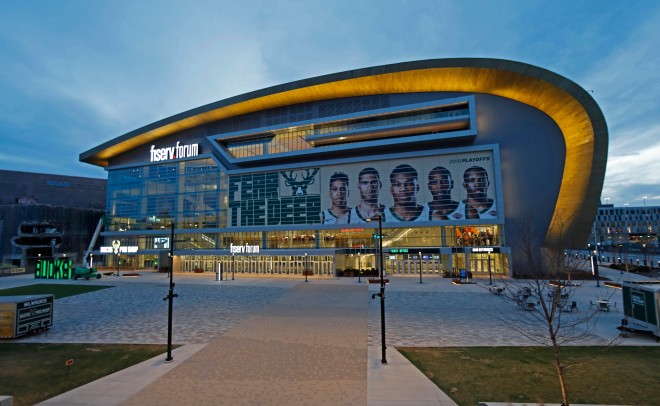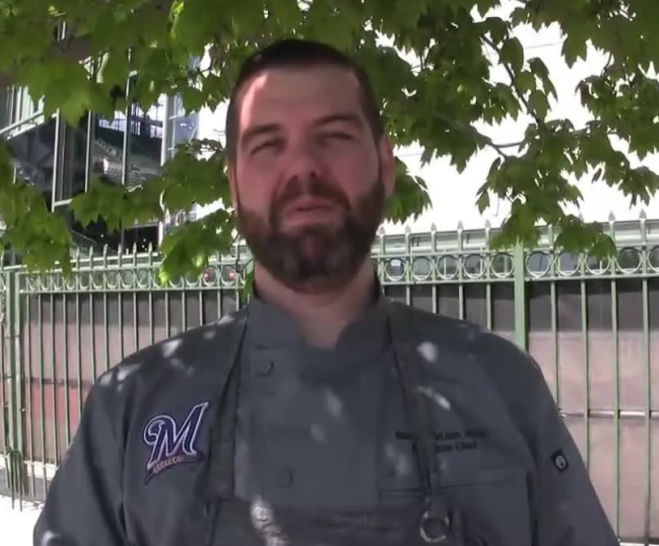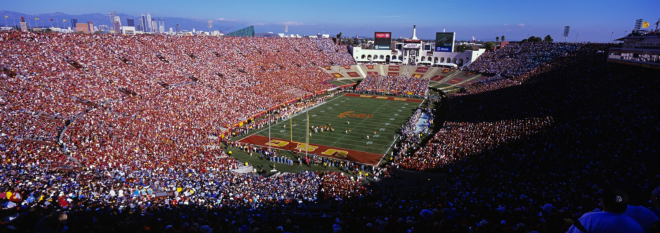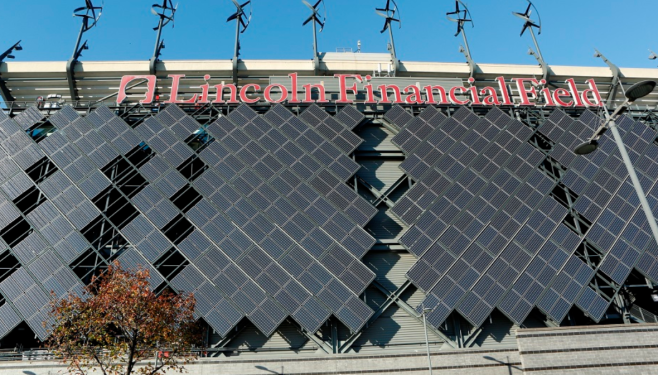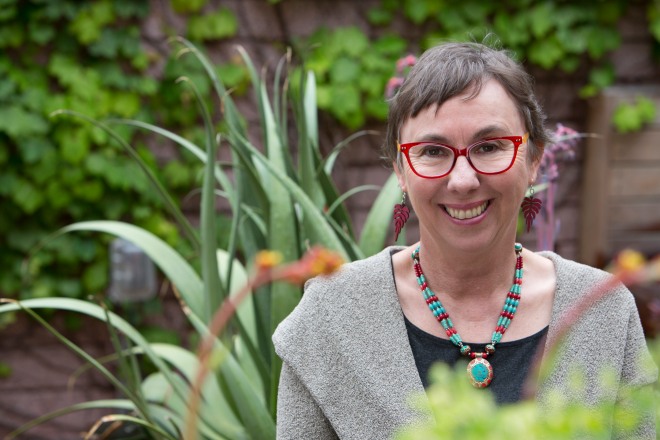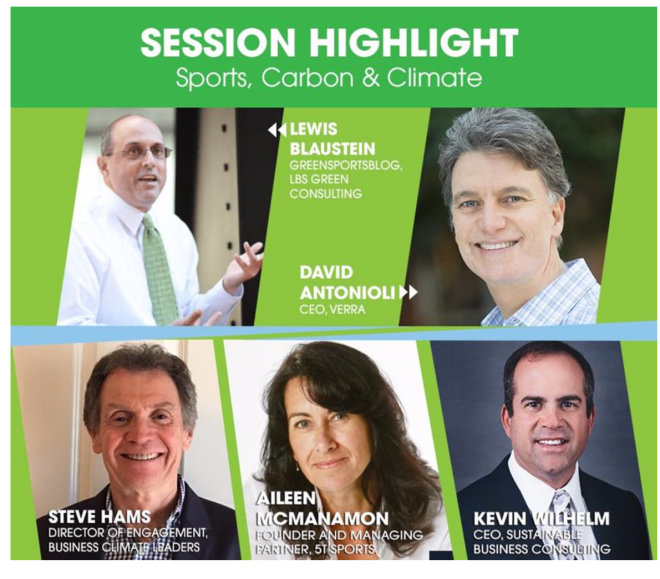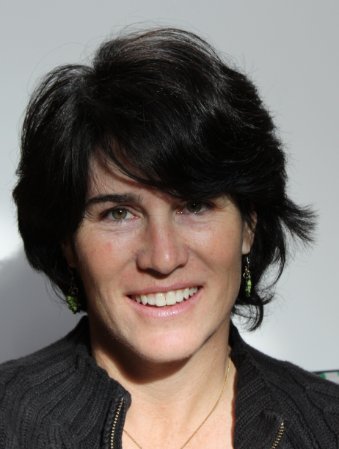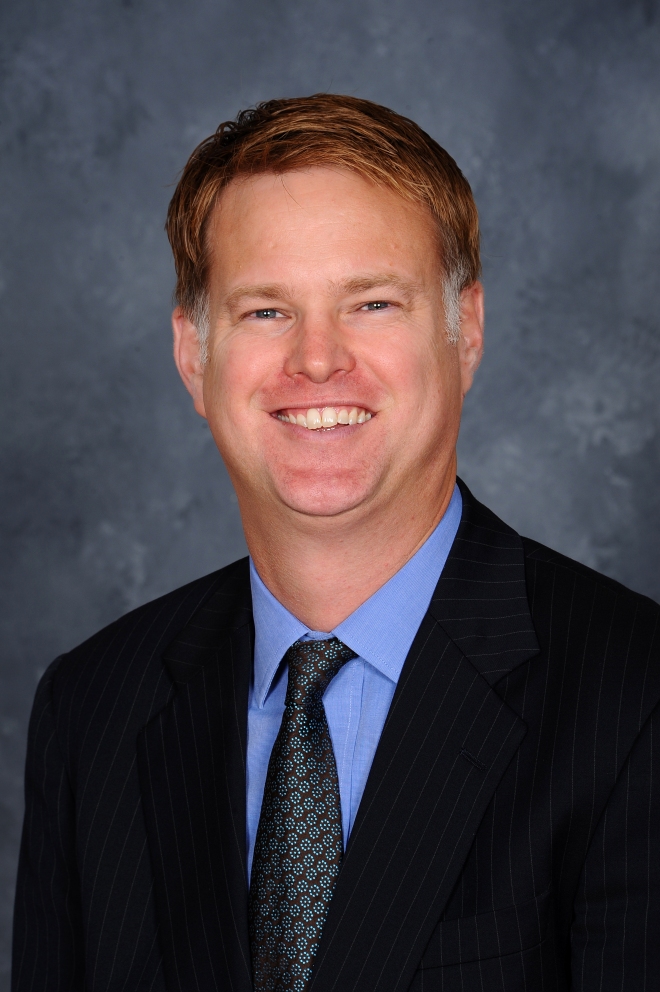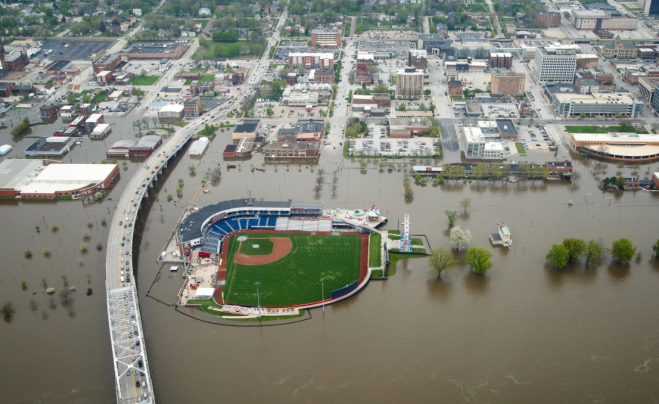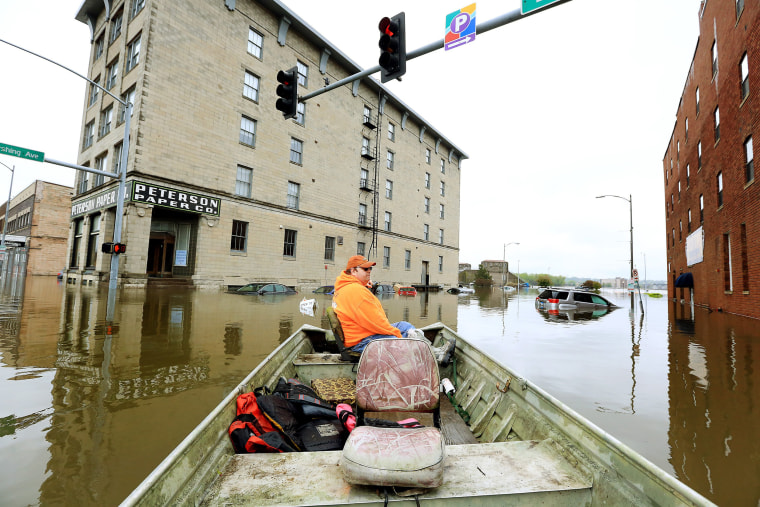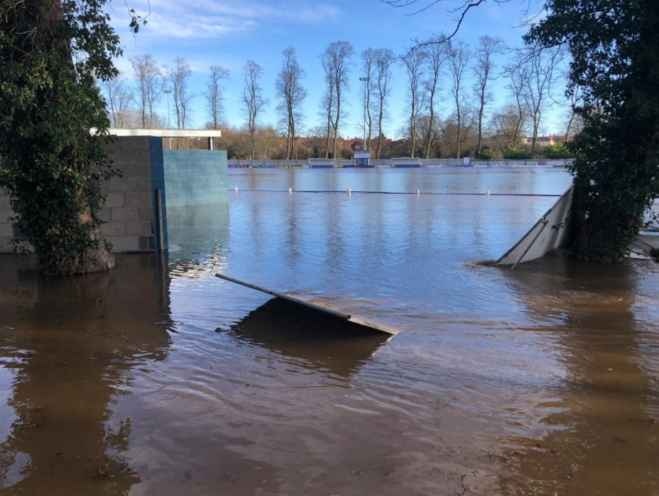Viviane Fraisse is not close to being satisfied.
Not at all.
One could excuse the head of sustainability at Roland Garros — the Paris home of the French Open — as well as for the French Tennis Federation (FFT) if she rested on the strong green laurels her organization and the world’s lone clay court Grand Slam championship have earned over the past eight years.
But my refreshing conversation with Fraisse revealed her laser-like focus on — and a sense of urgency about — how she and her team could do better, from greenhouse gas emissions reductions at the tournament to fan engagement to tennis ball recycling to much more.
So with the 2019 French Open now underway, here is our interview with Viviane Fraisse.
GreenSportsBlog: Viviane, the FFT and Roland Garros have great Green-Sports stories. Before we get to them, how did you get involved with the organization and with sustainability?
Viviane Fraisse: Well, Lew, I’ve enjoyed sports from when I was a young girl and played tennis for fun. Then in 1991, I saw France defeat the United States in the Davis Cup final in Lyon and it was then that I knew that I wanted to work in sports.
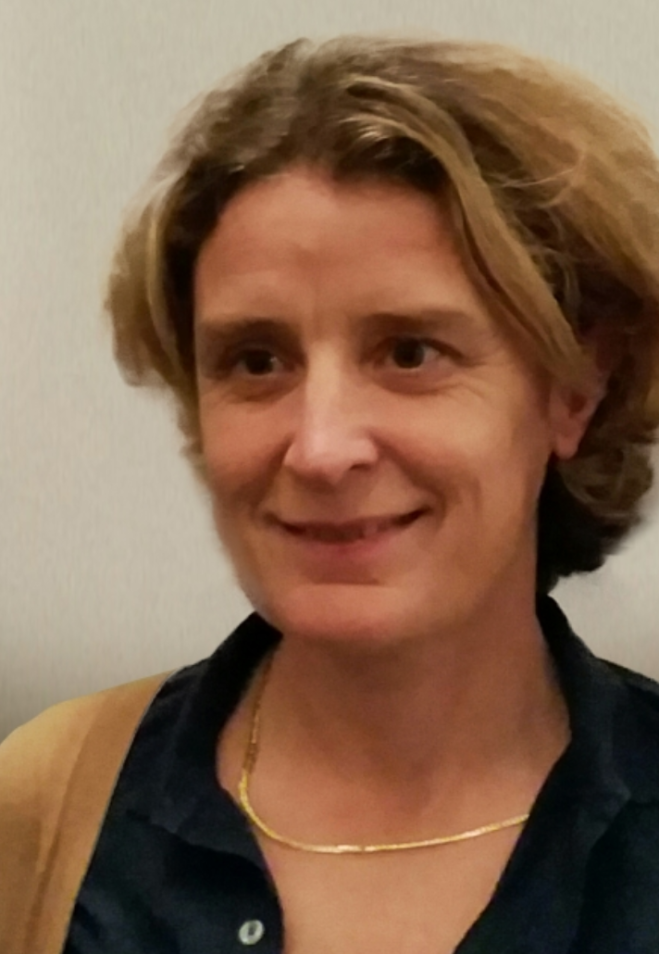
Viviane Fraisse (Photo credit: Sustainable Innovation in Sports)
GSB: For those who don’t follow tennis, the Davis Cup is the most important tournament between national teams in men’s game. I unfortunately remember the ’91 Final. Somehow a US team with Pete Sampras and Andre Agassi approaching their primes lost to Guy Forget (fore-ZHAY) and Henri Leconte. Don’t worry, I’m over it.
Viviane: It is a very pleasant memory for me. Anyway, I’ve been fortunate to work with with FFT and Roland Garros for many years. I was a law student and got to work in FFT’s legal department. Then I studied at the French Institute of Press and switched over to publishing, eventually become in charge of the department. Basically we handled everything the FFT published, for our tennis club operators all over France, for our athletic trainers. And at Roland Garros, we handled all of the match programs plus all other publishing during the tournament.
GSB: What a big and fun job! How did you end up running sustainability?
Viviane: Well, in around 2010 I was ready leave the publishing department. I had done pretty much everything I wanted to do there. While I was in publishing, I worked on a tennis ball recycling program on my own time and was really into it. The FFT were in the process of creating a CSR department; I decided I wanted to run it. And, in 2012, that’s exactly what happened.
GSB: That sounds like a huge challenge. How did you create a CSR department and, more specifically, an environmental sustainability effort from basically nothing?
Viviane: I was fortunate to start in 2012. That was the year London hosted the Summer Olympics and the host committee made huge strides forward on sustainability versus what had existed before. We followed their leadership in many areas. One was doing what was needed to earn ISO 20121 certification for Roland Garros as a sustainable event. Another was deploying our first Green Teams at the Open. And our commitment went far beyond the tournament. We also decided to take a similarly strong approach from 2012 on sustainability with our headquarters and with our tennis leagues around the country.
At the league and club level, we pushed an aggressive tennis ball recycling program — it some respects, it’s been the most important thing we’ve done. All the leagues across the 13 regions that make up France participate. To date we’ve recycled more than 12 million tennis balls. The clubs collect them and then our recyclers grind them up into granulate and felt.
The granulate has been used to construct over 1,200 square meters of playgrounds and tracks in areas of need, for schools and hospitals in the Paris area. The felt is trickier. First of all, the felt on our tennis balls is already recycled and it can’t be recycled more than once. So for now, we burn the felt and turn it into energy. We’re looking for a new partner to improve the process.

Members of the Roland Garros Green Team, or équipe verte (Photo credit: Corinne DuBreuil/FFT)
GSB: Well done, Viviane. What have you done to green the FFT’s/Roland Garros’ headquarters?
Viviane: At headquarters, we focus on sustainable transport for our 360 employees, recycling and sustainable procurement. On the latter, we look to apply a sustainability lens to everything we buy. Right now, all contracts over €100,000 are governed by our sustainable procurement policy, which represents about 85 percent of all of our procurement. Alas, the last 15 percent, the small contracts, are proving to be a challenge. We have a long way to go but we will get there.
GSB: I can imagine how the small contracts and companies would be the hardest to push on sustainability. Talk about your efforts at Roland Garros. It clearly has the highest profile of all of your areas of endeavor.
Viviane: You’re right about that, Lew. In 2019, our big goal is to raise public and fan awareness of sustainability.
GSB: That’s music to my ears…Say more…
Viviane: We are an original member of the UN’s Sports for Climate Action Framework. In a certain sense, we look at the Framework as the UN asking us to do more than we have on fan engagement on climate, regarding fan use of public transportation, waste diversion and more.
We’ve been tracking fan use of public transport since 2011. Back then, 55 percent of fans used it. Last year 60 percent used mass transit and another 12 percent walked or took their bikes. And only 1.6 percent came by themselves by automobile. So we’re headed in the right direction but there still is room to grow. With that in mind, we have a new bicycle parking area at Roland Garros this year. And that will lead in to a much more comprehensive bicycle plan in 2020.
On waste sorting, we’ve had Green Teams at Roland Garros since 2012 showing fans where to dispose of recyclables, compostables, and the rest. Messaging on waste sorting runs on video boards on the concourses. In 2015 we started a contest in which Green Teamers quiz fans about our sustainability efforts, including our climate impacts. The winner gets a pass for two to the following year’s tournament.
GSB: What a great approach! What kind of waste diversion rates do you have at the French Open and how much goes to landfill?
Viviane: Nothing goes to landfill, Lew. That is the law for the entire Paris region. Last year, 45 percent gets recycled and composted. Of the remaining 55 percent, 85 percent is converted into biogas and 15 percent is burned as electricity.
GSB: That is of course terrific, Viviane. Congratulations. I guess I still wonder how you are making the connection between your waste reduction mass transit to climate change?
Viviane: Great question, Lew. And this is of course very important. We weren’t talking about it as much as we could have before Sports for Climate Action. That is changing. For starters, we are hosting our first climate conference during the tournament on June 5, with a great lineup, including the Deputy Mayor of Paris, IOC, Paris 2024, the World Cup of Rugby 2023. Also our sponsors Lavazza and ENGIE.
Messaging about climate, including the conference, will run on screens, on our website, in the match programs. And there will be environmentally themed videos featuring players. Last year, Novak Djokovic, the world number one on the men’s side, did a video for us.

Novak Djokovic, the world’s #1 tennis player, in FFT’s green-themed video (Photo credit: FFT)
GSB: What about on French TV? Of course it’s great to communicate on the environment and climate at Roland Garros but millions more watch the tournament on TV.
Viviane: Our environmental messages run a few times on TV but we need to do better there. We’re very strong via our social media channels.
GSB: We will keep up with you on progress on the TV front. What is happening regarding the expansion and renovations at Roland Gross from a green perspective?
Viviane: Our new Philippe-Chatrier Stadium, our #1 venue, will open in 2021 with a retractable roof. We are going for BREEAM¹ certification for sure. And we are working with ENGIE on a new way to do solar at a sports venue: This year we will be testing mobile solar on campus with the goal of a bigger deployment down the road.
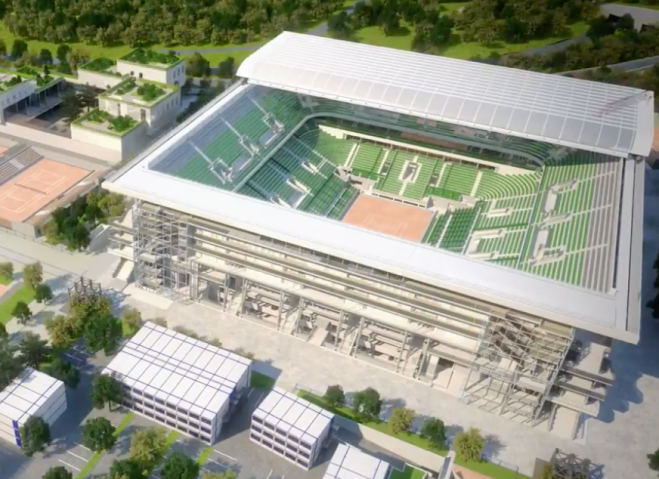
Rendering of the renovated Philippe-Chatrier Stadium which will open in 2021 with a retractable roof and a likely BREEAM certification (Credit: Roland Garros)
GSB: Very cool, Viviane. That’s the first I’ve heard of mobile solar at a sports venue. I have to say, you, the FFT and Roland Garros have done an amazing job on the environment and things are looking up on climate. But, as you say, you need to do more. With that in mind, what keeps you up at night, sustainability-wise?
Viviane: We need to do a better job of getting our sponsors fully on board regarding environment and climate. Some are doing great things but we can’t really have the effect we need on innovation, communications and more without more sponsor support. We believe Sport for Climate Action and the Climate Conference on June 5 will help. And our collaboration with Paris 2024, which is a daily thing, should help with sponsors.
¹ BREEAM = Building Research Establishment Environmental Assessment Method, an alternative certification protocol to LEED. The Building Research Establishment is based in Watford, England.
